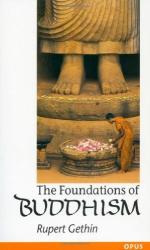
|
| Name: _________________________ | Period: ___________________ |
This test consists of 15 multiple choice questions and 5 short answer questions.
Multiple Choice Questions
1. _____ is an ancient language closely related to Sanskrit.
(a) Bali.
(b) Pali.
(c) Purdu.
(d) Urdu.
2. The matrkas are a summary of _____ lists of significant points of Buddha's teaching.
(a) Tantric.
(b) Mnemonic.
(c) Kenjonic.
(d) Canonic.
3. The _____ school of Buddhism in the sixth and seventh centuries was suspicious of theoretical formulations regarding the practice of Buddhism.
(a) Tantric.
(b) Theraveda.
(c) Japanese Zen.
(d) Tibetan.
4. The three types of suffering are pain, change, and _____.
(a) Separation.
(b) Reactions.
(c) Boredom.
(d) Conditions.
5. One of the ten rules of training for a monk involves refraining from _____ which cause heedlessness.
(a) Intoxicants.
(b) Free will.
(c) Ego trips.
(d) Oration.
6. One of the three fundamental defilements in Buddhism is _____.
(a) Dissent.
(b) Distraction.
(c) Delusion.
(d) Consent.
7. One of the three fundamental defilements in Buddhism is _____.
(a) Dispersion.
(b) Aversion.
(c) Attitude.
(d) Conversion.
8. One of the ten rules of training for a monk involves refraining from eating _____.
(a) During a full moon.
(b) On Sunday.
(c) Before sunrise.
(d) After midday.
9. One of the noble truths regarding the origin of suffering is the _____ existence.
(a) Thirst for.
(b) Chain reaction of.
(c) Denial of.
(d) Hatred for.
10. What form of ritual was carried out at the death of the Buddha?
(a) Mummufication.
(b) Embalming.
(c) Cremation.
(d) Air sacrifice.
11. Some three months after the death of the Buddha, 500 arhats took part in a _____.
(a) Silent meditation.
(b) Fire ritual.
(c) Vedic sacrifice.
(d) Communial recitation.
12. One of the ten rules of training for a monk involves refraining from _____.
(a) Harming living creatures.
(b) Eating with utensils.
(c) Walking with shoes on.
(d) Eating rice.
13. The Bodhisattva was conceived on the _____ night of Asadha, or July.
(a) Full moon.
(b) Darkest.
(c) Longest.
(d) Fourth.
14. The book looks at what is _____ in the three schools of Buddhist thought.
(a) Modern.
(b) Separate.
(c) Extreme.
(d) Common.
15. Mahinda was a Buddhist monk who was the son of the emperor _____.
(a) Gautama.
(b) Asoka.
(c) Agama.
(d) Bhikkhu.
Short Answer Questions
1. The Mahayana likely began as a _____ movement.
2. The Buddha is the author of _____ books and treatises.
3. One of a monk's four basic resources is lodging _____.
4. The Visuddhimagga is the Path of ____.
5. The religious tradition of Buddhism, at the time of the writing of the book, was followed by over _____ people.
|
This section contains 366 words (approx. 2 pages at 300 words per page) |

|




